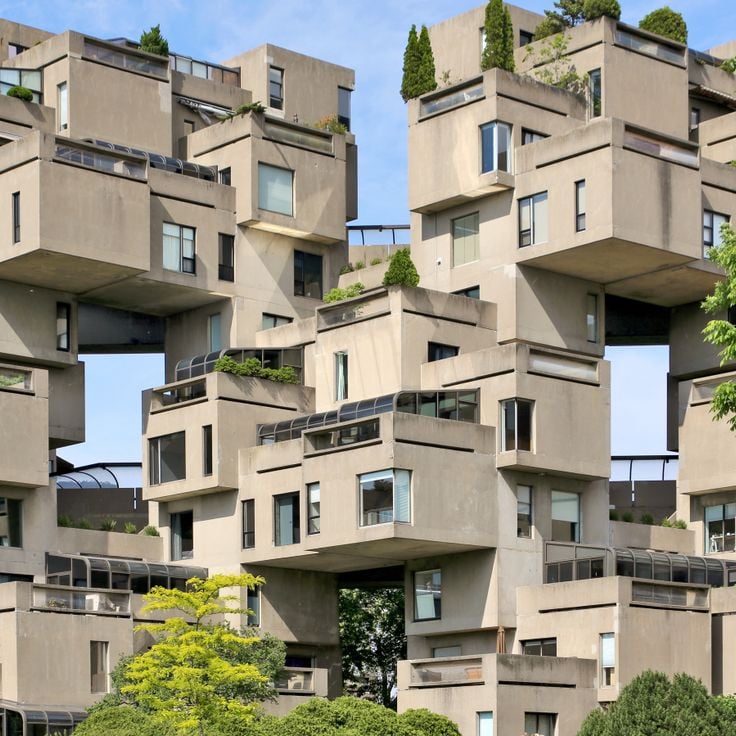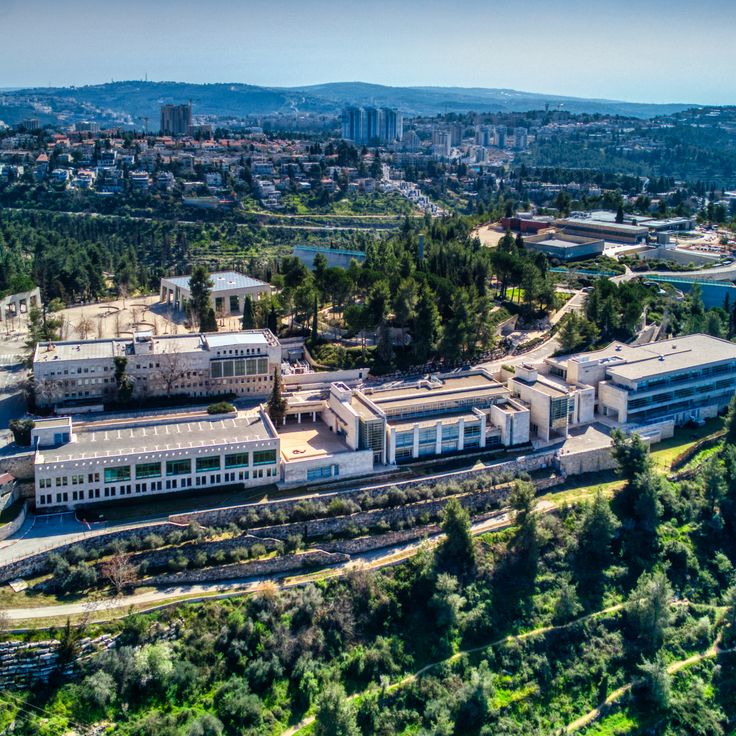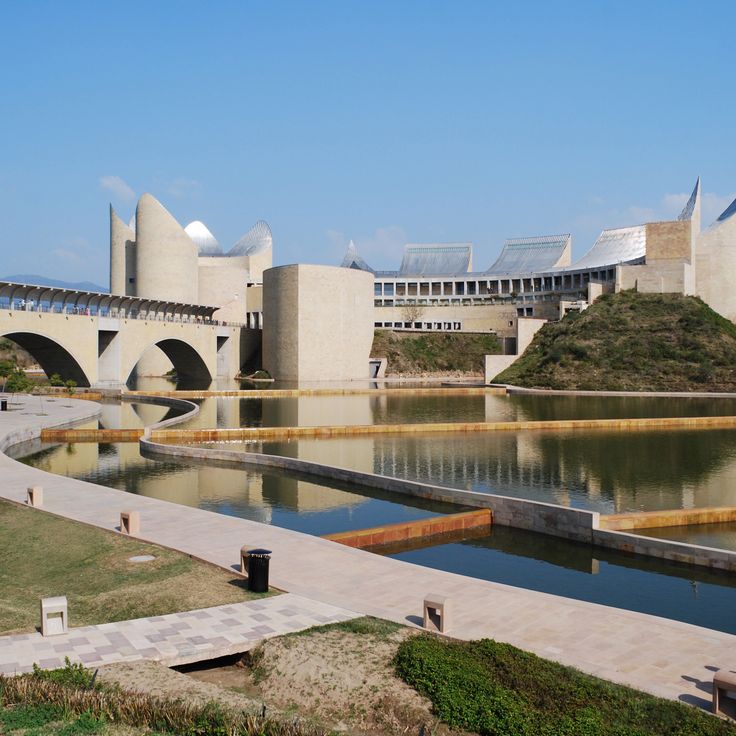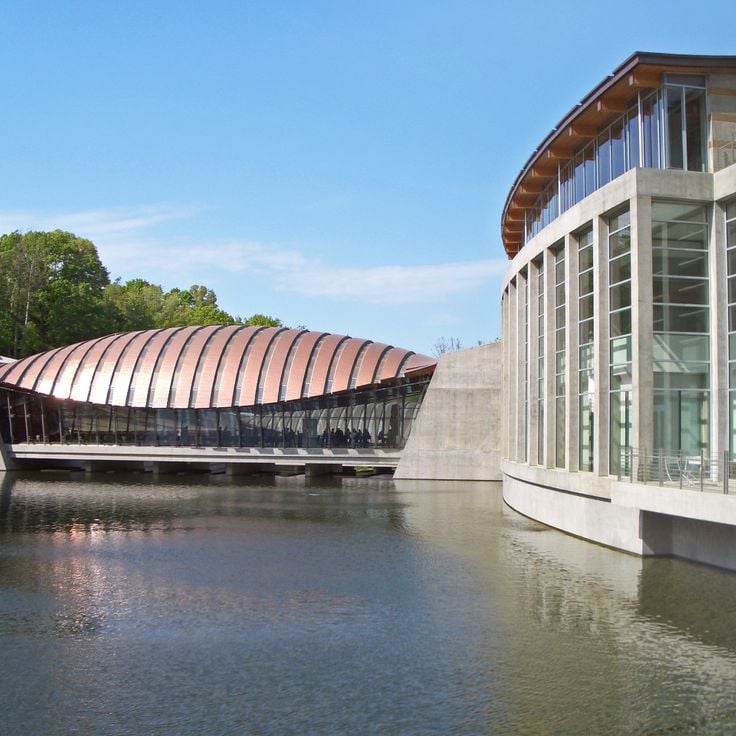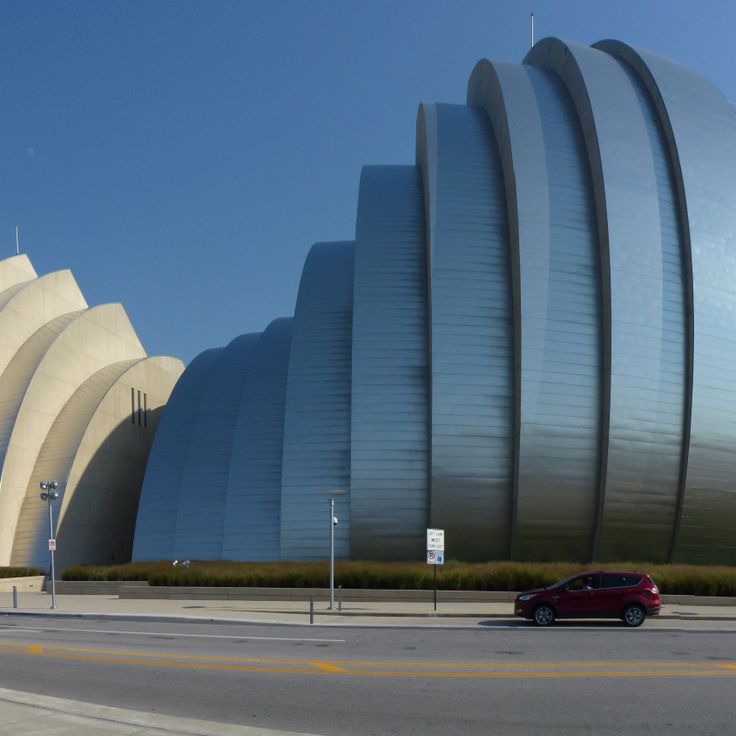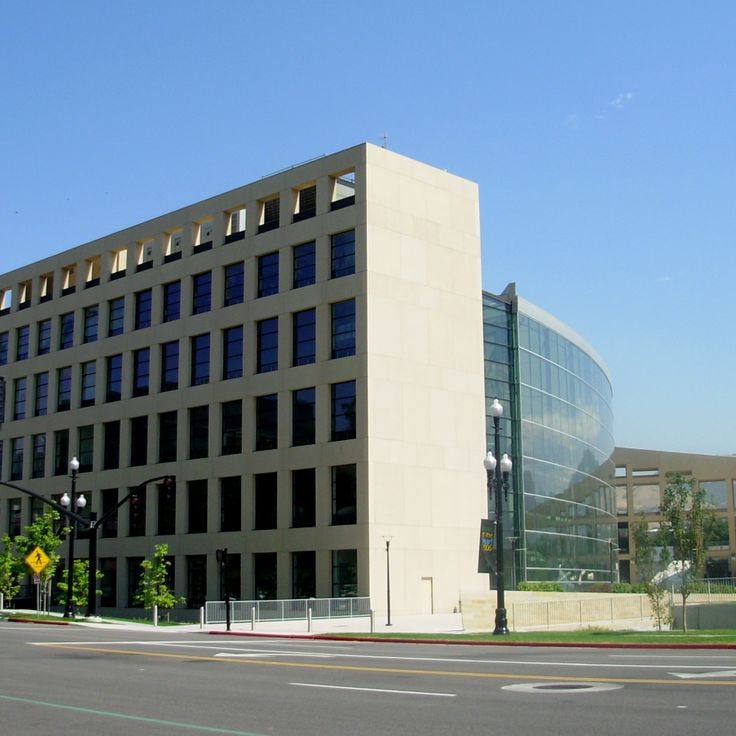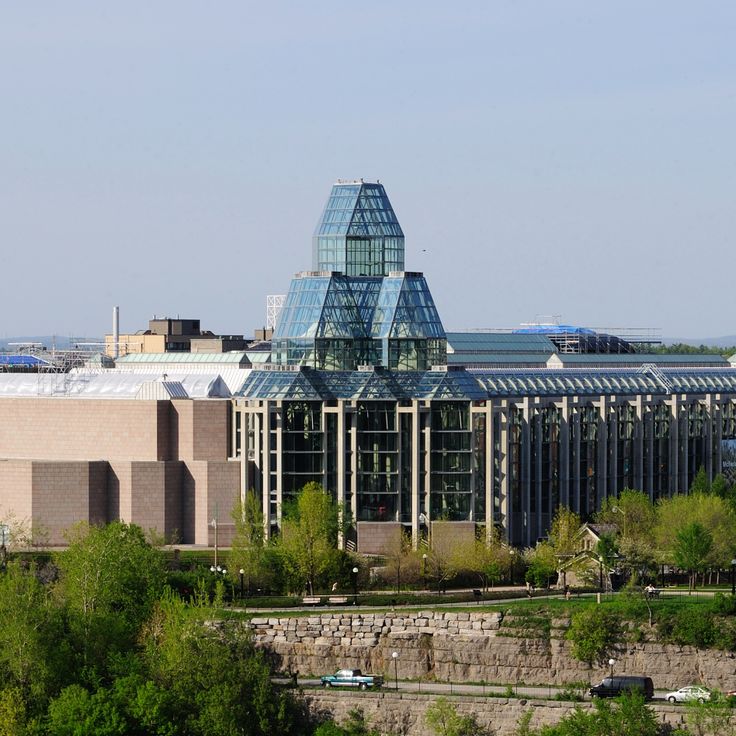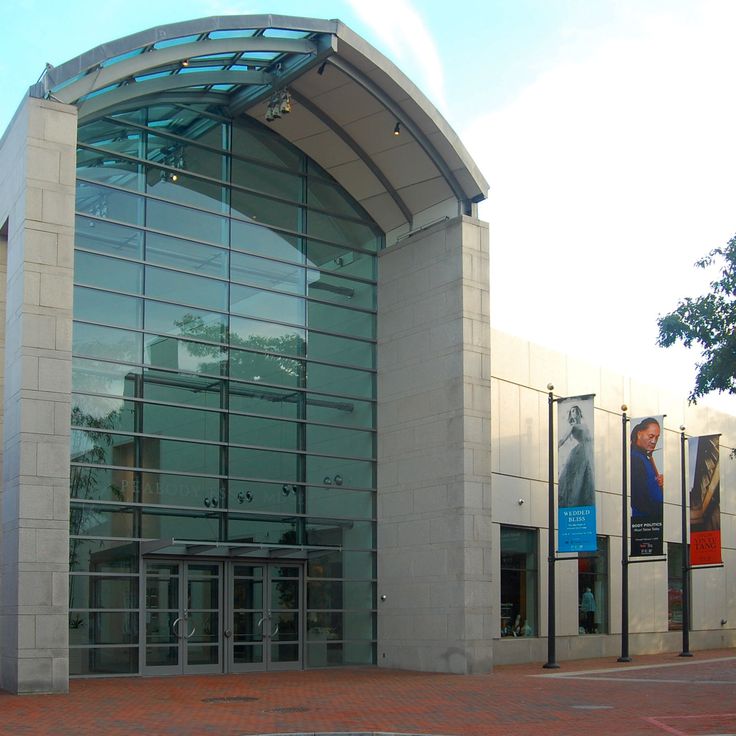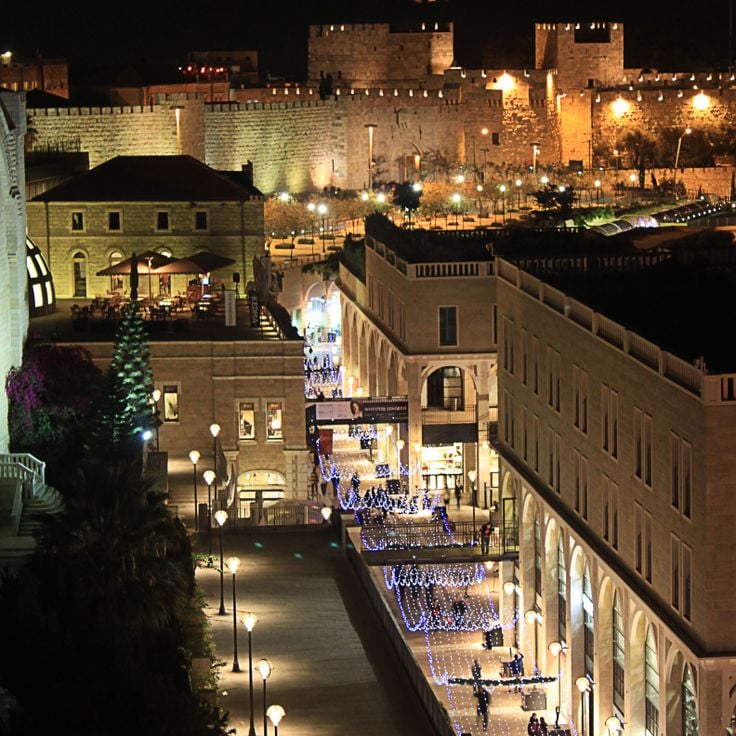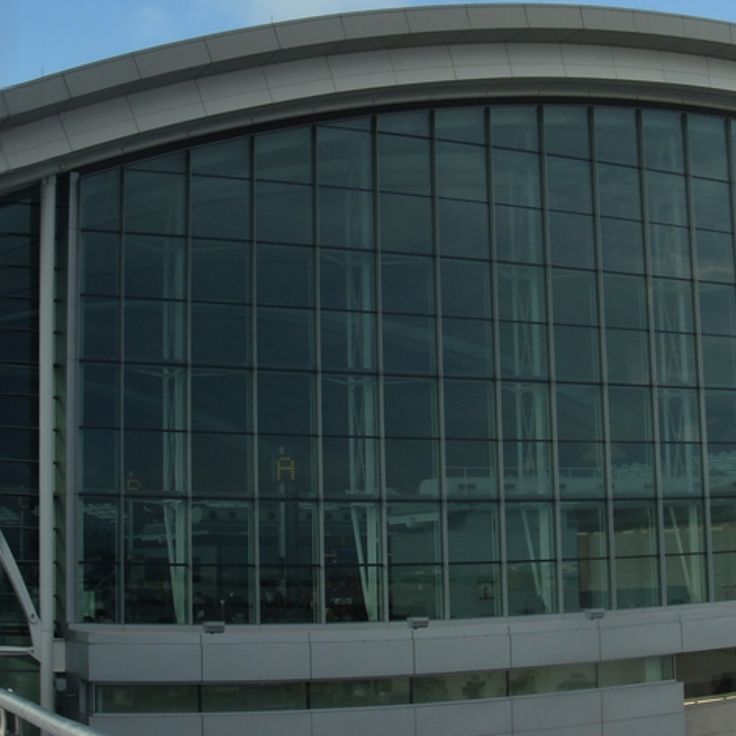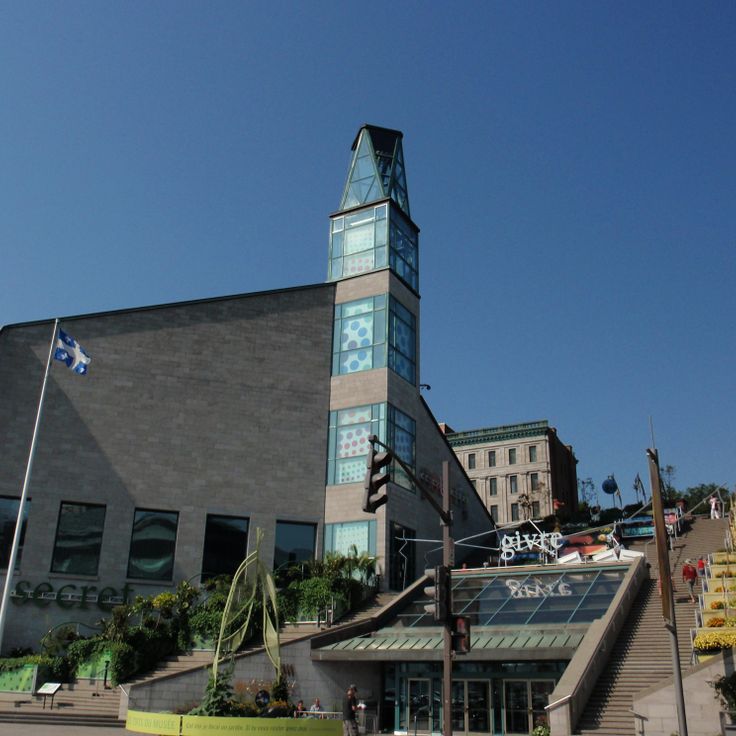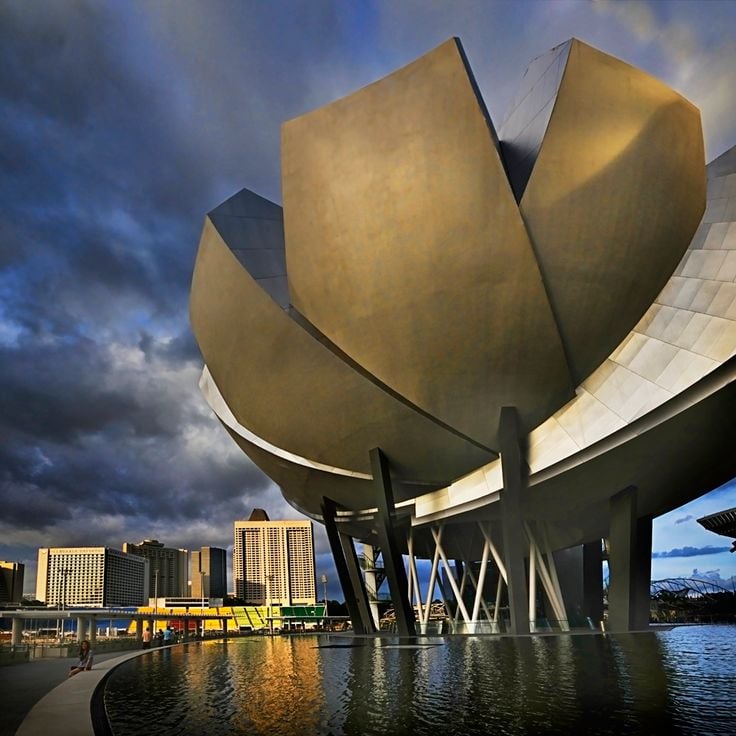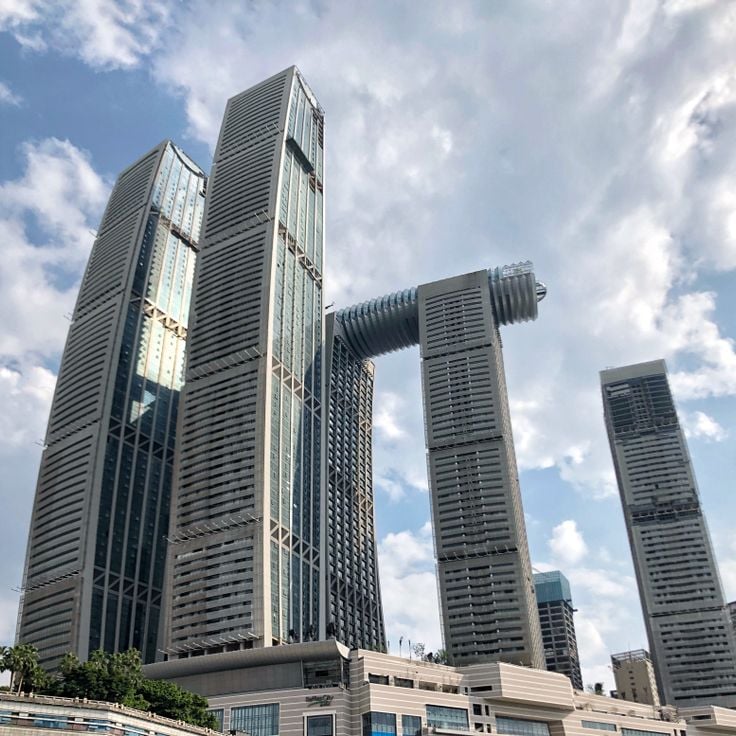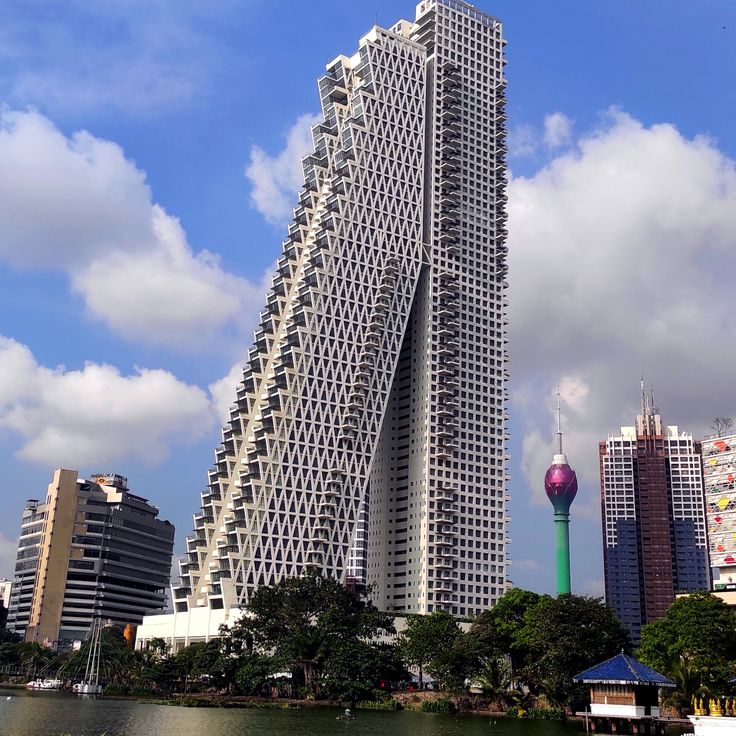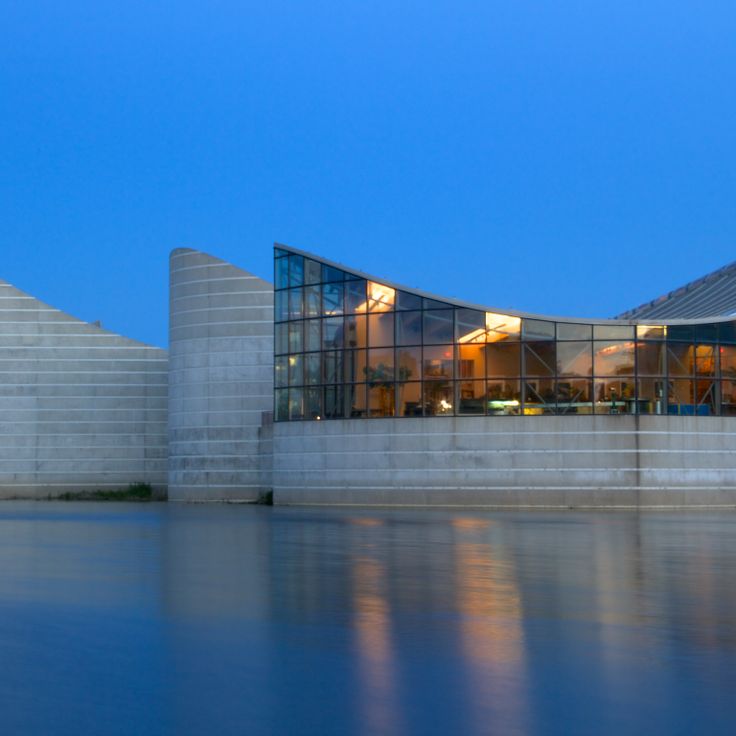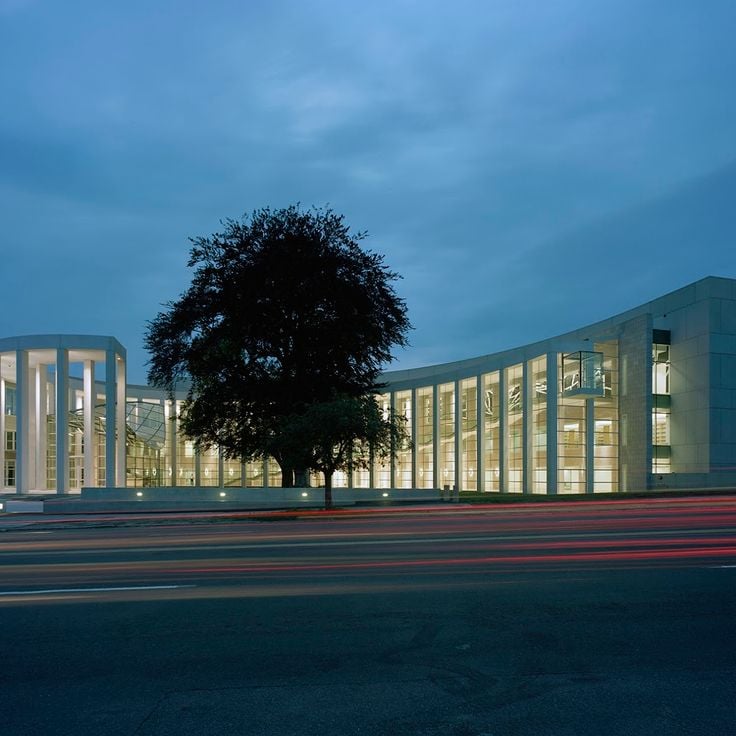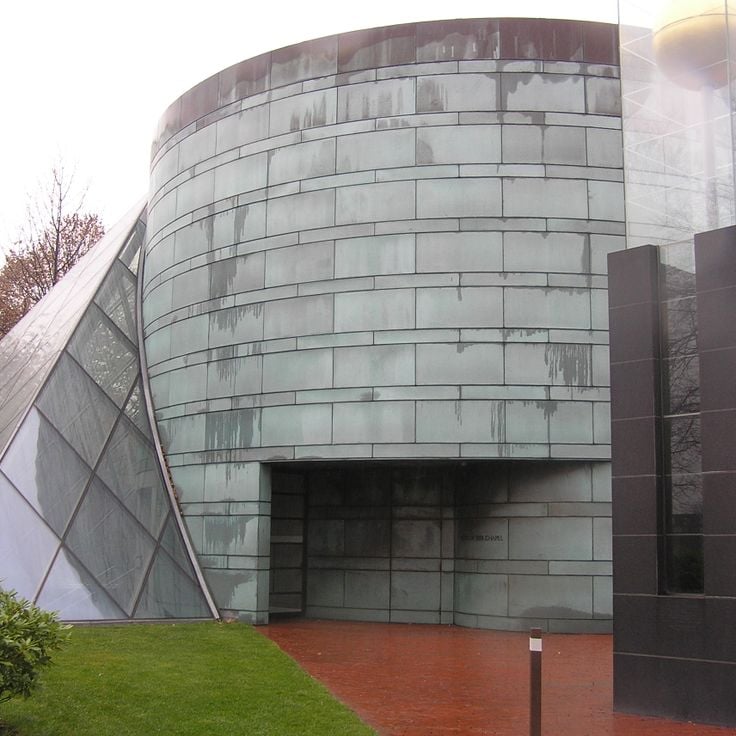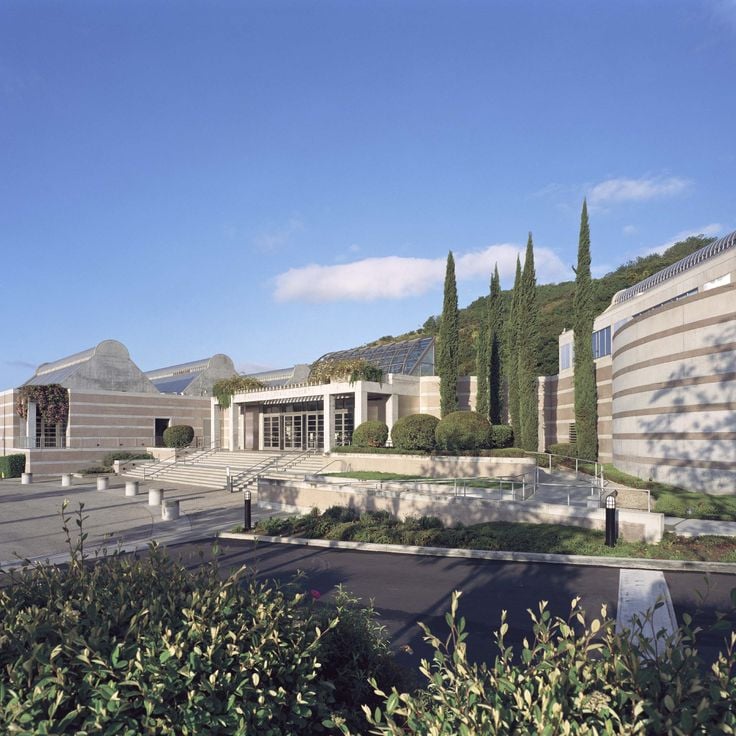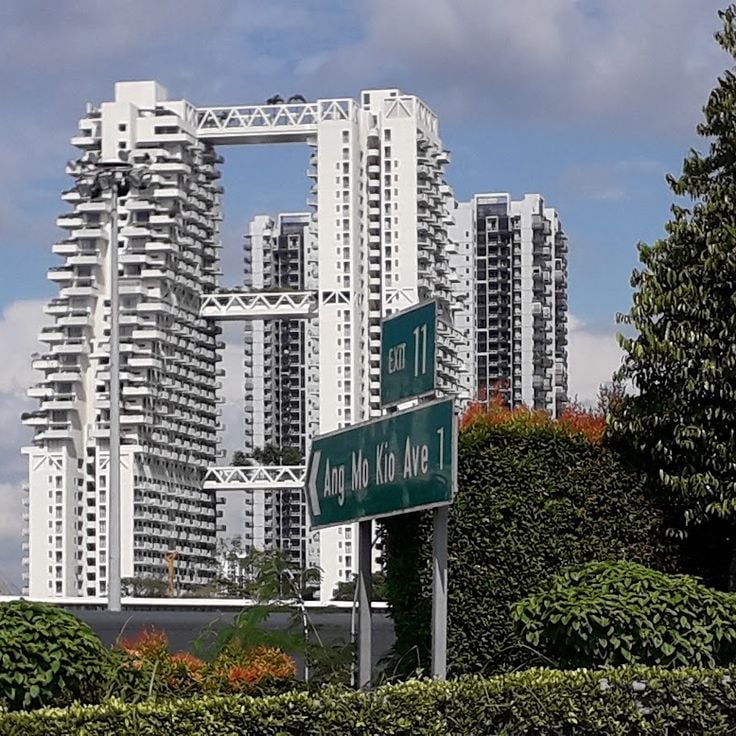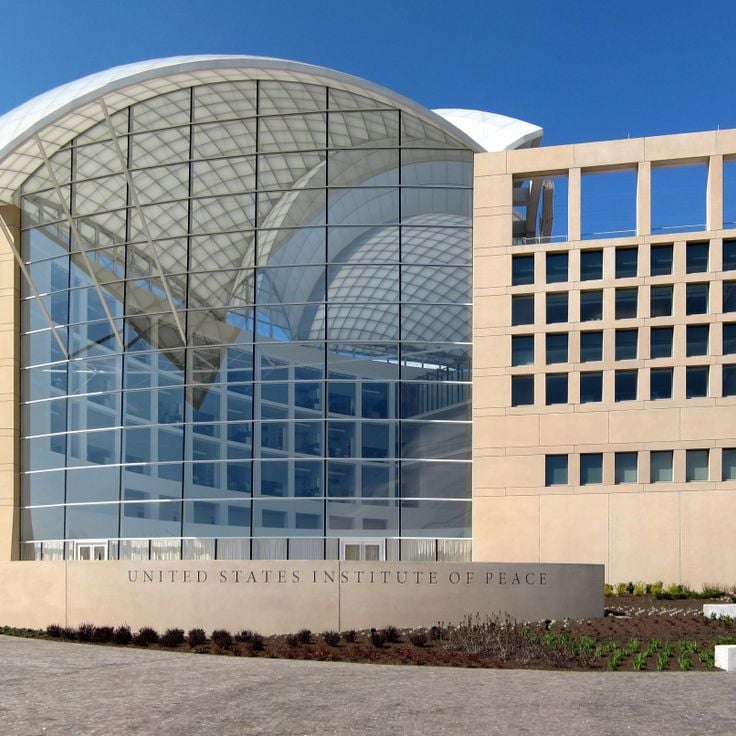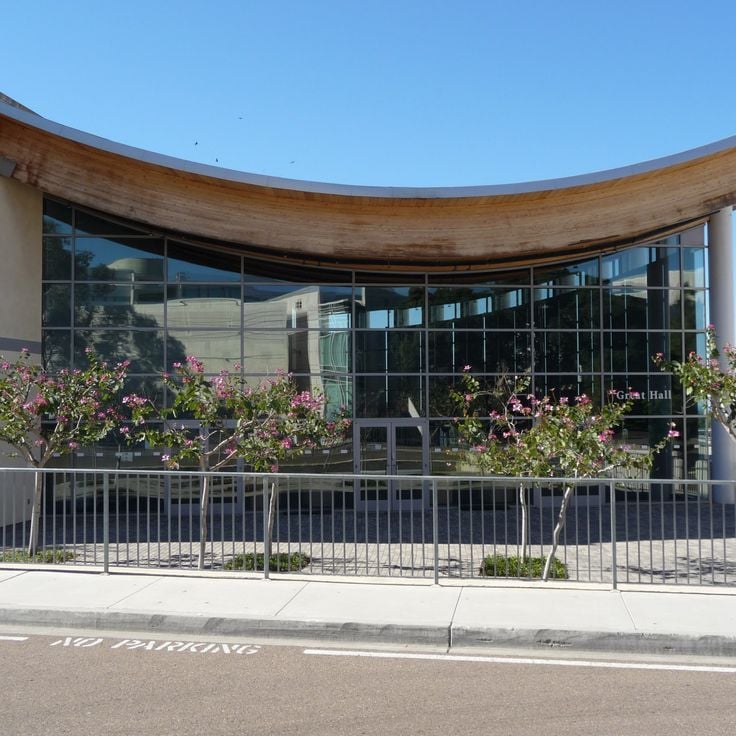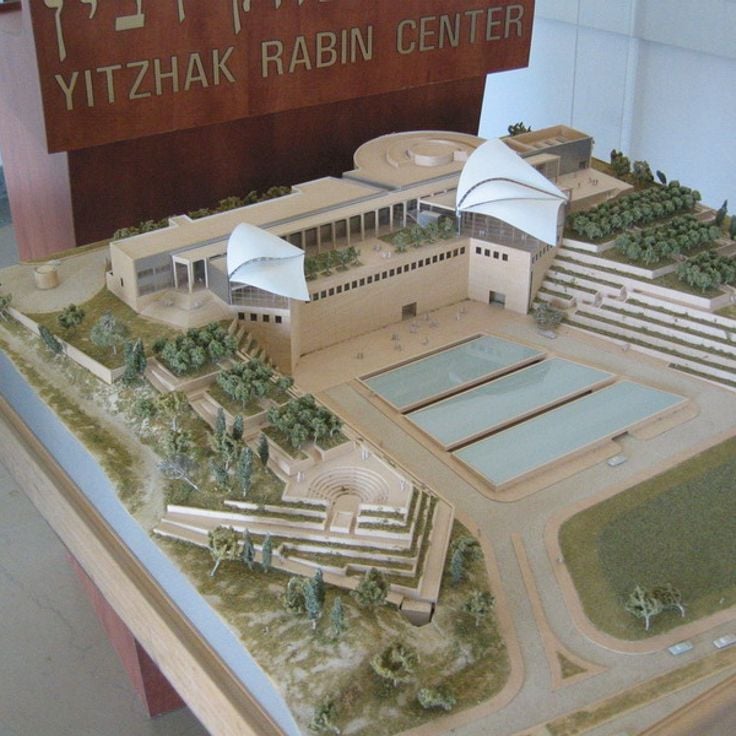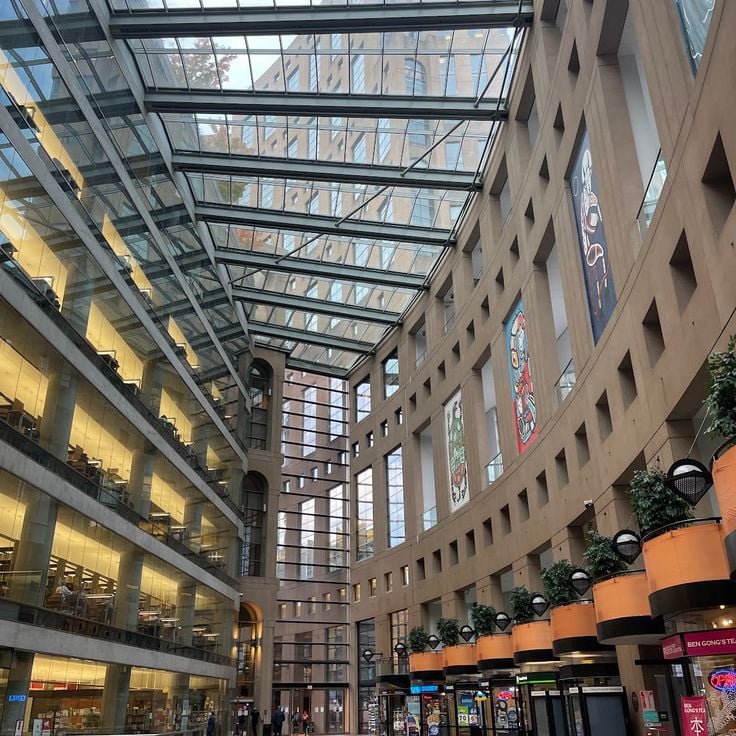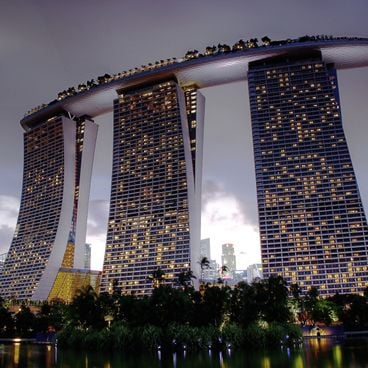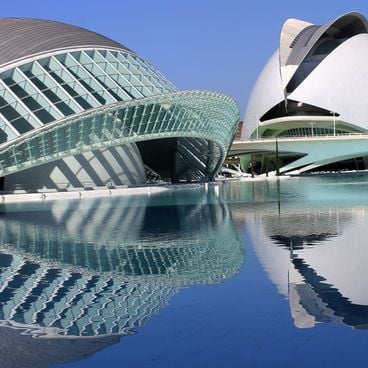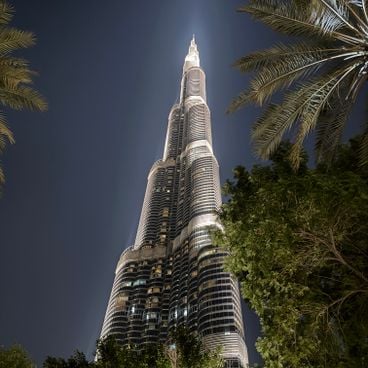This collection brings together major works by architect Moshe Safdie, whose practice is distinguished by particular attention to natural light, outdoor spaces, and the integration of buildings into their surroundings. From Montreal to Singapore, through Jerusalem and several American cities, his projects demonstrate an approach that seeks to reconcile contemporary needs with respect for local contexts. Among the featured works are Habitat 67 in Montreal, an experimental residential complex composed of stacked concrete modules offering each unit its own terrace, and the Marina Bay Sands complex in Singapore with its three towers connected by a 340-meter terrace. The collection also includes several museums such as the Yad Vashem Holocaust History Museum in Jerusalem, the Crystal Bridges Museum of American Art in Bentonville, and the National Gallery of Canada in Ottawa. Other projects like the Salt Lake City Public Library, the Kauffman Center for the Performing Arts in Kansas City, or the Khalsa Heritage Memorial Complex in India illustrate the diversity of architectural programs entrusted to Safdie throughout his career.
Habitat 67 is an experimental residential complex designed by Moshe Safdie for the 1967 World Exposition in Montreal. The building consists of 354 prefabricated concrete modules stacked in various combinations to form 146 housing units. Each unit has a private terrace created by the offset arrangement of the modules. The project aimed to provide a solution for high-density urban housing while maintaining access to outdoor spaces and natural light.
Marina Bay Sands is a large hotel complex located on the waterfront of Singapore. The building consists of three towers with 55 floors each, connected by a 340-metre-long rooftop terrace. The complex includes a hotel with 2,561 rooms, a casino, a shopping centre, several restaurants and a convention centre. The rooftop terrace features a 150-metre-long swimming pool.
The Yad Vashem Holocaust History Museum was designed by Moshe Safdie and serves as Israel's central memorial to the victims of the Holocaust. The institution presents exhibitions, archives, and educational programs documenting the systematic persecution of Jewish people during World War II. The museum preserves personal testimonies, photographs, and historical documents that trace the fate of millions of people during this period.
The Khalsa Heritage Memorial Complex was designed by Moshe Safdie and documents the history of the Sikh community. This museum focuses on the founding of the Khalsa order in 1699 by Guru Gobind Singh and the religious and cultural development of Sikhism. The architecture combines geometric forms in concrete and steel with traditional symbols of Sikh culture. Exhibition spaces present historical artifacts, manuscripts, and multimedia installations about the history of Punjab and Sikh traditions.
The Crystal Bridges Museum of American Art was designed by Moshe Safdie and opened in 2011 in the forests of Arkansas. The building comprises multiple pavilions connected by covered bridges, organized around two natural spring-fed ponds. The architecture employs glass, wood, copper, and concrete to create connections between interior spaces and the surrounding woodland. The permanent collection spans American art from the colonial era to contemporary works, including paintings, sculptures, and photography. The museum provides free admission and features walking trails throughout its 120-acre grounds.
The Kauffman Center for the Performing Arts opened in 2011 and houses two main halls for symphony concerts, ballet, and opera. Moshe Safdie designed the building with characteristic curved glass structures that rise above the performance spaces. The center is home to the Kansas City Symphony, Kansas City Ballet, and Lyric Opera of Kansas City.
This library was completed in 2003 following Moshe Safdie's plans. The building features a glass and metal facade with a characteristic curved form. The library spans six floors and offers over 500,000 items for borrowing. A public garden on the roof, at the top level, provides views of the city and the Wasatch Mountains. The architecture integrates reading spaces benefiting from natural light through large windows. The facility serves as an important educational and cultural center for the community.
The National Gallery of Canada was designed by Moshe Safdie and opened in 1988. This museum houses significant collections of Canadian, European and contemporary art. The glass architecture of the building provides views of the Parliament buildings. The collections include works by the Group of Seven, Indigenous art and European masters. The gallery contains several exhibition spaces that present different periods and styles from art history.
The Peabody Essex Museum was established in 1799 and ranks among the oldest museums in the United States. The extension designed by Moshe Safdie in 2003 added new exhibition spaces and connected the museum's historic buildings. The museum houses extensive collections of Asian art, including Chinese export art and Japanese works, along with maritime artifacts and American decorative arts. The collection features a complete 18th-century Chinese merchant house reconstructed on the site.
The Mamilla Mall extends as an open-air pedestrian street connecting Jerusalem's Old City with the modern downtown area. Moshe Safdie designed this commercial promenade that combines historic architecture with contemporary design. The center houses international fashion brands, local shops, restaurants and cafés. The street follows the route of an ancient trade road and incorporates restored 19th-century stone buildings into its modern development.
Terminal 1 at Lester B. Pearson International Airport was designed by Moshe Safdie and opened in 2004. This facility spans multiple levels and includes departure and arrival areas, baggage claim sections, as well as numerous shops and restaurants. The design incorporates natural light through extensive glazing and creates functional spaces for travelers.
The Musée de la Civilisation was designed by Moshe Safdie and combines historic buildings with contemporary architecture in Quebec City's old quarter. The institution documents the development of human societies through permanent exhibitions and rotating presentations. The museum offers interactive installations that guide visitors through different periods of civilization history and organizes educational programs for school groups and families.
The ArtScience Museum was designed by Moshe Safdie and features a form reminiscent of a lotus flower. The building rises from the Marina Bay waterfront and hosts rotating exhibitions that connect art, science, technology and culture. The ten finger-like structures allow natural light into the exhibition spaces and collect rainwater for the museum's operations.
Raffles City Chongqing is a mixed-use development comprising eight towers connected by a skybridge suspended at 250 metres above ground. Located at the confluence of the Yangtze and Jialing rivers, this complex integrates residential, office and retail spaces alongside a large conservatory housing tropical gardens. Designed by architect Moshe Safdie and completed in 2019, the project forms a major urban landmark in Chongqing.
Jewel Changi Airport combines retail, dining, and leisure facilities with an indoor garden beneath a glass dome. The central Rain Vortex forms the world's tallest indoor waterfall and flows through multiple levels of the building. Moshe Safdie's design integrates tropical vegetation into the terminal architecture and creates an air-conditioned transit space for travelers.
The Altair Towers form a residential and commercial complex in central Colombo. Designed by Moshe Safdie, the project consists of two tall towers housing apartments, offices and retail spaces. The architecture combines tropical design elements with contemporary construction techniques. The complex includes shared facilities, sports amenities and outdoor areas for residents and users.
Exploration Place is a science and children's museum in Wichita, designed by architect Moshe Safdie. The facility combines exhibition spaces dedicated to scientific themes with hands-on learning stations for young visitors. The museum presents concepts from physics, biology and technology through experiments and interactive installations. The spaces offer different thematic zones that encourage touching and experimenting with the presentations.
The Esplanade complex features two domed theatre structures covered by a distinctive aluminum sunshade construction that references the durian fruit shell. The building houses a concert hall with 1,600 seats and a theatre with 2,000 seats. Outdoor performance spaces extend along the waterfront. The geometric facade serves a climatic function in the tropical environment. The facility covers six hectares along Marina Bay.
The Springfield Federal Courthouse was designed by Moshe Safdie and completed in 2008. The building features a curved form that wraps around three heritage trees aged between 200 and 500 years. The design incorporates a colonnade at the entrance and conceals the necessary security features. The architecture combines traditional elements with a contemporary language.
The Class of 1959 Chapel was designed by Moshe Safdie and stands on the Harvard Business School campus. Completed in 1992, the building features an exterior clad in oxidized copper. The interior provides a 100-seat sanctuary illuminated by natural light through a skylight. The chapel serves as a non-denominational gathering space for students and faculty members.
The Skirball Cultural Center occupies 6 hectares at the base of the Santa Monica Mountains. Moshe Safdie developed this project over 30 years until completion of its fourth and final phase in 2013. The complex consists of multiple buildings, covered walkways, and courtyards integrated into the natural topography. The center organizes exhibitions on Jewish history and culture, along with educational programs for diverse age groups.
Sky Habitat is a residential complex in Singapore completed in 2012. Designed by Moshe Safdie, the development incorporates several architectural concepts from Habitat 67. The project features apartments with private terraces and gardens, along with communal spaces for residents.
The headquarters of the United States Institute of Peace was designed by Moshe Safdie and opened in 2011. The building is located on the National Mall in Washington and houses conference rooms, offices, and meeting spaces. The architecture supports the organization's mission to prevent and resolve international conflicts. The structure combines functional work areas with spaces for dialogue and collaboration among representatives from different nations and cultures.
Eleanor Roosevelt College was designed by Moshe Safdie and completed in 2003 as part of the University of California San Diego. The campus includes student residences, classrooms, and communal spaces. The buildings are organized around courtyards that serve as central gathering points for students. The design promotes social interaction through shared outdoor areas and connects modern educational facilities with residential functions.
The Yitzhak Rabin Center for Israeli Studies was designed by Moshe Safdie and opened in 1999. The center in Tel Aviv houses a museum, library, and archives dedicated to the history of Israel and the life of Yitzhak Rabin. The site also contains the grave of the former Prime Minister. The building demonstrates Safdie's characteristic use of geometric forms and natural light.
The Vancouver Library Square was designed by Moshe Safdie and completed in 1995. This architectural complex houses the central city library along with retail and dining spaces. The elliptical structure features a distinctive façade reminiscent of Roman amphitheatres. The adjacent public plaza serves as a gathering space in the downtown core, connecting the library to the surrounding neighbourhood. The concrete and glass construction spans nine storeys and provides access to extensive collections and public spaces.
The John G. Diefenbaker Building was designed by Moshe Safdie and completed in 1994. This office complex serves as an administrative building for the Canadian federal government. The construction combines granite with large glass facades that integrate into the architectural landscape of the capital. The building features multiple floors housing various ministries and administrative departments.
The National Campus for the Archaeology of Israel was designed by Moshe Safdie and opened in 2019. The complex houses the Israel Antiquities Authority along with its research, conservation and storage facilities. The building includes scientific laboratories, exhibition spaces and repositories for the country's archaeological collections.
